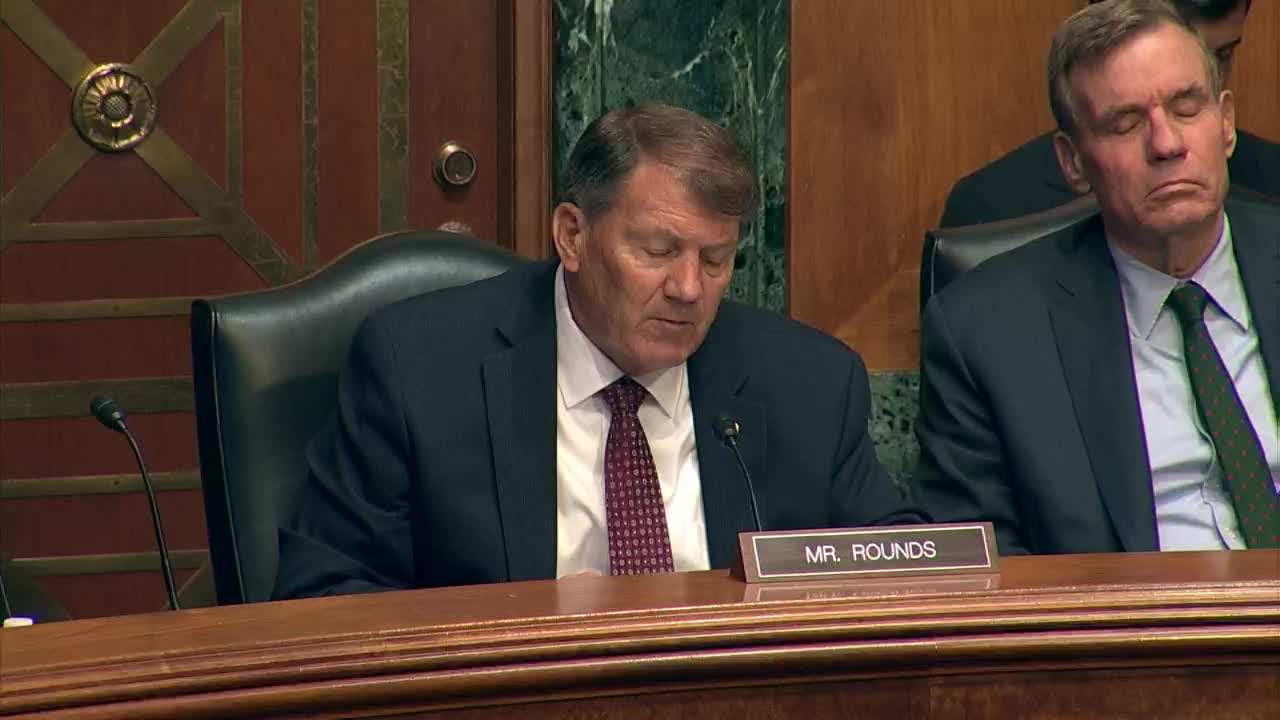Mister Cohen discusses AI's role in market surveillance and financial crime investigations
July 30, 2025 | Banking, Housing, and Urban Affairs: Senate Committee, Standing Committees - House & Senate, Congressional Hearings Compilation
This article was created by AI summarizing key points discussed. AI makes mistakes, so for full details and context, please refer to the video of the full meeting. Please report any errors so we can fix them. Report an error »

On July 30, 2025, the U.S. Senate Committee on Banking, Housing, and Urban Affairs convened a subcommittee hearing focused on the role of artificial intelligence (AI) in capital and insurance markets. The discussions highlighted how AI can enhance market surveillance and address emerging risks, particularly in the context of trading and insurance.
One of the key topics was the application of AI in market surveillance. Mister Cohen explained that AI is currently utilized in two significant ways. First, it aids in alert calibration, where various scenario tests are run to refine the detection of manipulative trading patterns. This process is crucial as trading becomes increasingly sophisticated, allowing regulators to distinguish between genuine market abuse and false positives. By reducing false alerts, resources can be directed toward higher-risk activities, enhancing overall market integrity.
Second, AI tools are employed to assist investigators once alerts are generated. By automating manual tasks that typically consume hours, AI can streamline investigations, allowing them to be completed in minutes. This not only increases efficiency but also improves the effectiveness of identifying patterns of market abuse, thereby bolstering financial crime prevention efforts.
The hearing also addressed the challenges faced by the reinsurance industry in insuring companies that develop or deploy advanced AI systems. Mister Kalanich noted that the reinsurance market plays a vital role in the insurance ecosystem by focusing on non-correlated, diverse risks. This approach enables the deployment of more capital. He drew parallels to the evolution of cyber insurance, where initial capital limitations were overcome through the development of actuarial models that better assess the frequency and severity of cyber risks. The integration of generative AI and machine learning into underwriting and claims analysis is reshaping this landscape, prompting the industry to adapt its risk assessment strategies.
In conclusion, the subcommittee hearing underscored the transformative potential of AI in both market surveillance and the insurance sector. As these technologies continue to evolve, they promise to enhance the efficiency and effectiveness of financial oversight and risk management. The discussions set the stage for ongoing exploration of regulatory frameworks and industry practices that will be necessary to navigate the complexities introduced by AI in these critical markets.
One of the key topics was the application of AI in market surveillance. Mister Cohen explained that AI is currently utilized in two significant ways. First, it aids in alert calibration, where various scenario tests are run to refine the detection of manipulative trading patterns. This process is crucial as trading becomes increasingly sophisticated, allowing regulators to distinguish between genuine market abuse and false positives. By reducing false alerts, resources can be directed toward higher-risk activities, enhancing overall market integrity.
Second, AI tools are employed to assist investigators once alerts are generated. By automating manual tasks that typically consume hours, AI can streamline investigations, allowing them to be completed in minutes. This not only increases efficiency but also improves the effectiveness of identifying patterns of market abuse, thereby bolstering financial crime prevention efforts.
The hearing also addressed the challenges faced by the reinsurance industry in insuring companies that develop or deploy advanced AI systems. Mister Kalanich noted that the reinsurance market plays a vital role in the insurance ecosystem by focusing on non-correlated, diverse risks. This approach enables the deployment of more capital. He drew parallels to the evolution of cyber insurance, where initial capital limitations were overcome through the development of actuarial models that better assess the frequency and severity of cyber risks. The integration of generative AI and machine learning into underwriting and claims analysis is reshaping this landscape, prompting the industry to adapt its risk assessment strategies.
In conclusion, the subcommittee hearing underscored the transformative potential of AI in both market surveillance and the insurance sector. As these technologies continue to evolve, they promise to enhance the efficiency and effectiveness of financial oversight and risk management. The discussions set the stage for ongoing exploration of regulatory frameworks and industry practices that will be necessary to navigate the complexities introduced by AI in these critical markets.
View full meeting
This article is based on a recent meeting—watch the full video and explore the complete transcript for deeper insights into the discussion.
View full meeting